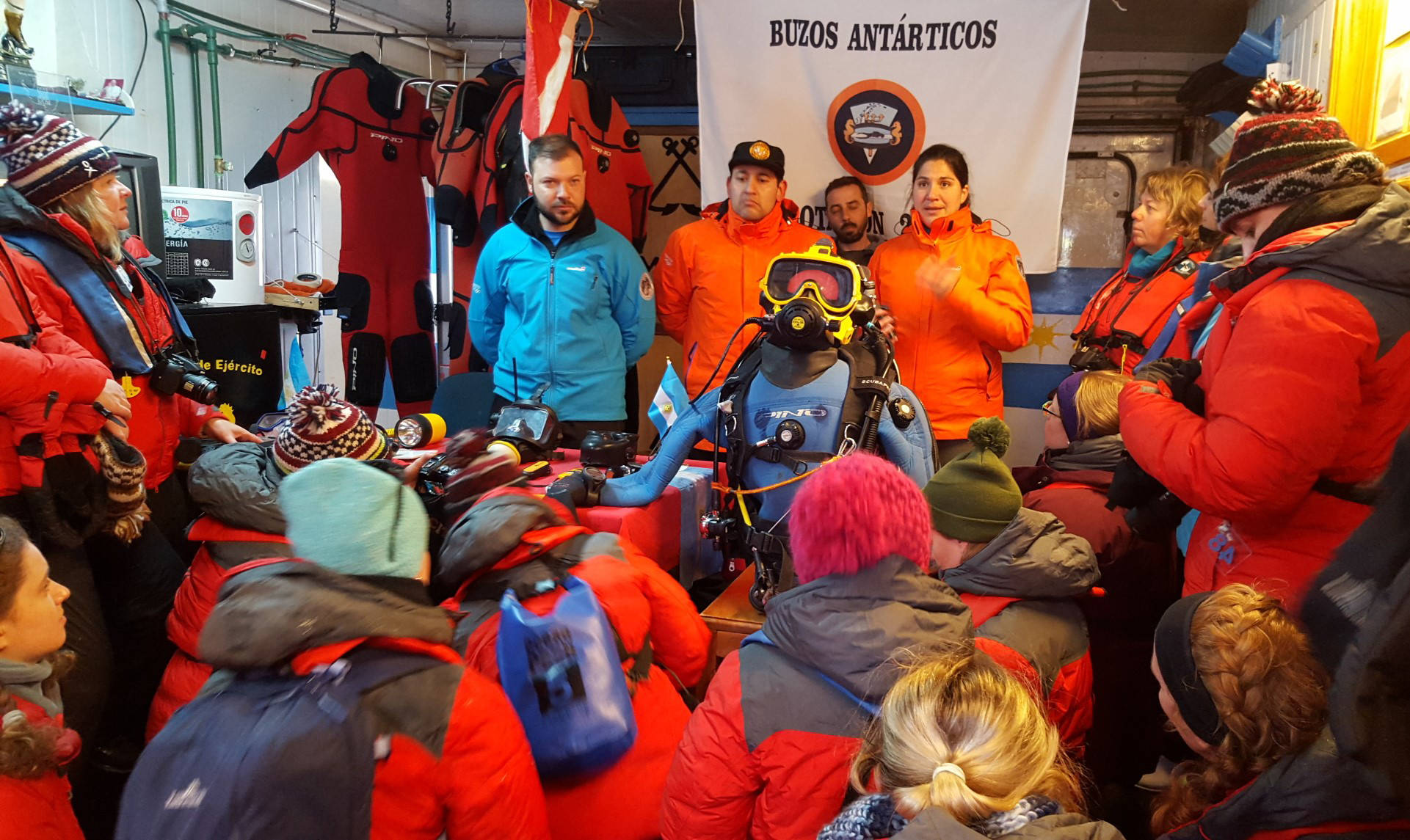Research stations in Antarctica look a lot like coastal villages in Alaska. Metal roofs, multipurpose shipping containers and above-ground pipes apparently work just as well down there as here.
When we visited Palmer Station, one of three United States research bases, nine days into our three-week Antarctic expedition, I noted with some pride the American ingenuity of repurposing an old fish tank into a hot tub — something I would expect to see back home.
By this point in our journey, we had visited China’s Great Wall Station as well as Cámara Base and Carlini Base, two of 13 research stations operated by Argentina. These three bases, along with Palmer Station, are north of the Antarctic Circle and about as far from the equator as Fairbanks.
The other two active, year-round U.S. stations are below the Antarctic Circle: McMurdo, which is capable of supporting more than 1,200 residents, making it the largest community in Antarctica; and Amundsen-Scott South Pole, the most southern place on earth.
As an expedition of women scientists, we were keenly interested in the realities of working at a research station. We had the rare opportunity to host Palmer Station-based researchers, support staff and administrators onboard our ship for small group conversations about life in Antarctica and the challenges of doing research in extreme conditions.
Although each individual I met was clearly very capable, it really struck me how vulnerable they and their work were to mechanical problems, equipment shortages, mental and physical health issues, and weather delays. They had to rely on each other and on the goodwill of nearby stations, regardless of current political tensions, when things got rough.
Antarctica is a continent owned by no one and provides a unique template for how nations can interact on neutral ground, or in this case neutral snow and ice. Clarifying that interaction, the Antarctic Treaty was signed in 1959 by 12 countries with active scientific interests in and around Antarctica and came into force in 1961.
There are now 53 nations who have signed on to the treaty. And it is a notably simple agreement. Antarctic shall be used for peaceful purposes and freedom of scientific investigation. Peace and Science.
The value and purpose of treaties and international agreements have been hot topics lately. We continue to test, debate and embrace what it means to be part of something bigger. What do we get out of it? Why should we engage with others? Can we trust them? Can they trust us?
The Antarctic Treaty is now almost 60 years old. There are signs of strain as new research bases are built and tourism expands, bringing the threat of invasive species and greater environmental impacts, but the treaty holds and is an impressive example of the benefits of working together across nations.
Closer to home, and in a region drawing global attention with emerging resources and opportunities, we still have no Arctic treaty.
As an ocean surrounded by human-occupied lands rather than an unoccupied continent, the Arctic is an entirely different polar beast than Antarctica. But does that mean an Arctic treaty is not needed or not achievable?
We have the same need to address concerns over impacts like oil spills, overfishing and expanding infrastructure in a unique polar environment. We need collaborative scientific partnerships to understand the rapidly changing Arctic ecosystem and its influence on oceanic and atmospheric currents. And we have the additional need to address protection of traditional hunting and fishing grounds for indigenous peoples of the region.
The closest we have to an agreement that would address some of the issues in the Arctic is the United Nations Convention on the Law of the Sea, which was negotiated between 160 nations in the 1980s; however, the United States has not signed onto it yet despite recent efforts by our Alaskan delegation.
Meanwhile, the Arctic Council moved forward with an agreement on enhancing international Arctic scientific cooperation last year. Nevertheless, an Arctic treaty that clarifies expectations and builds trust among neighboring Arctic nations and peoples seems unlikely in the near future.
We visited Rothera Research Station, the largest British base, near the end of our trip. In the Antarctic summer about 100 people live and work here with only 25 hearty souls staying for the winter. When they are not out monitoring penguin and seal colonies or SCUBA diving to assess marine invertebrates, researchers document the presence of plastics and microplastics in the Southern Ocean. Even in this remote outpost, evidence of this global problem can be found.
After we toured the labs at Rothera and saw the dive facility that supports the underwater research, we walked up a hill for a panoramic view. Standing next to a monument dedicated to all the sled dogs that had worked at the station and looking down on the metal roofs, I felt both a connection to Alaska as well as the remoteness of our 67° S latitude.
I was also aware of the importance of knowing your neighbors – whether across the icefield at an Argentinian Base, over the horizon on a Russian icebreaker or down the street on the Kenai Peninsula – and trusting that they will show up when you need them. Treaty or no treaty.
Sue Mauger is Science Director for Cook Inletkeeper and lives in Homer. She went to Antarctica as part of Homeward Bound – a global leadership initiative for women in science.

